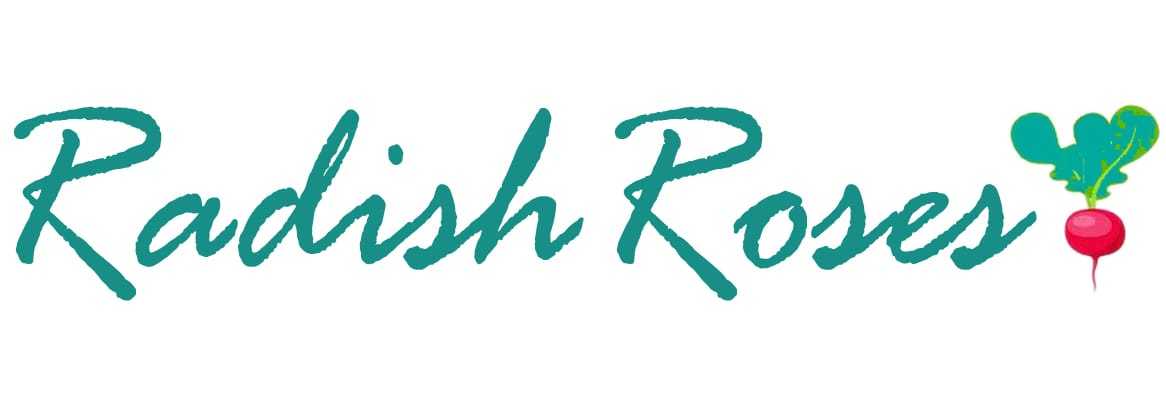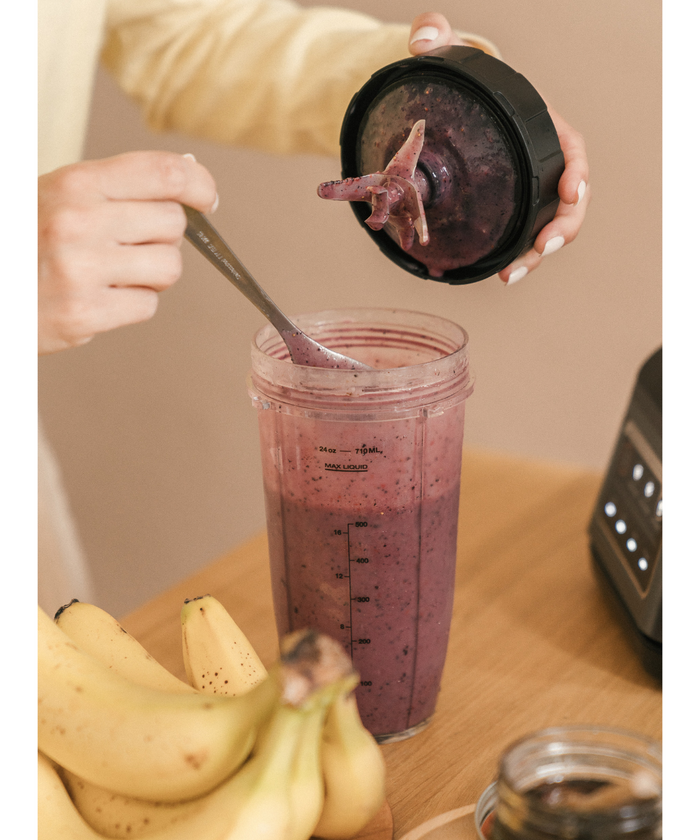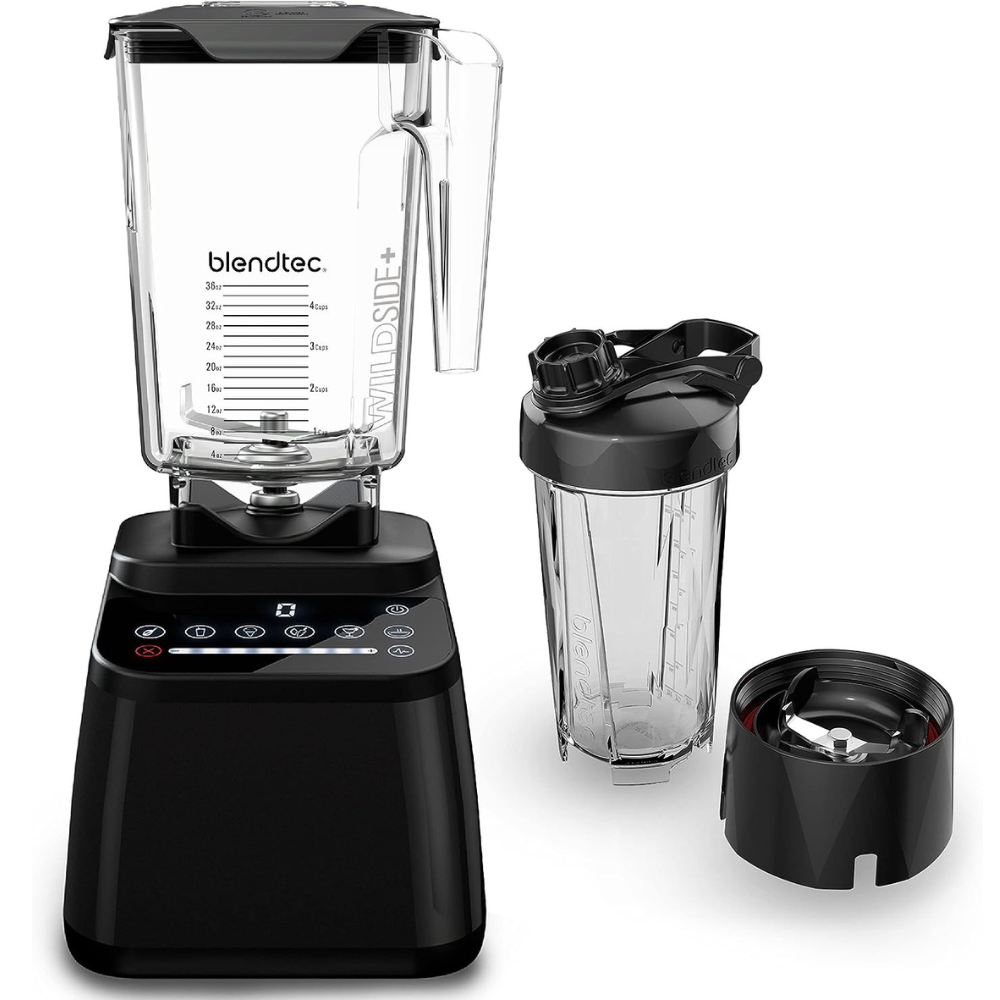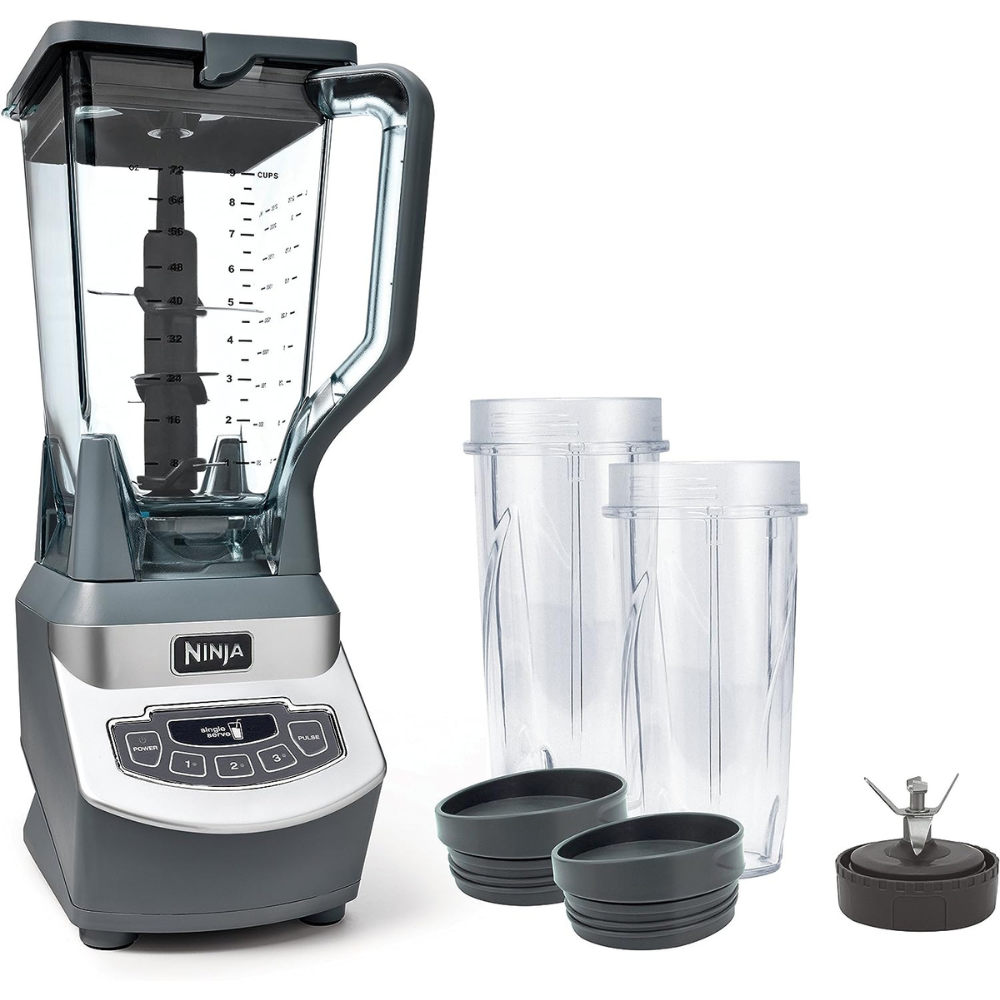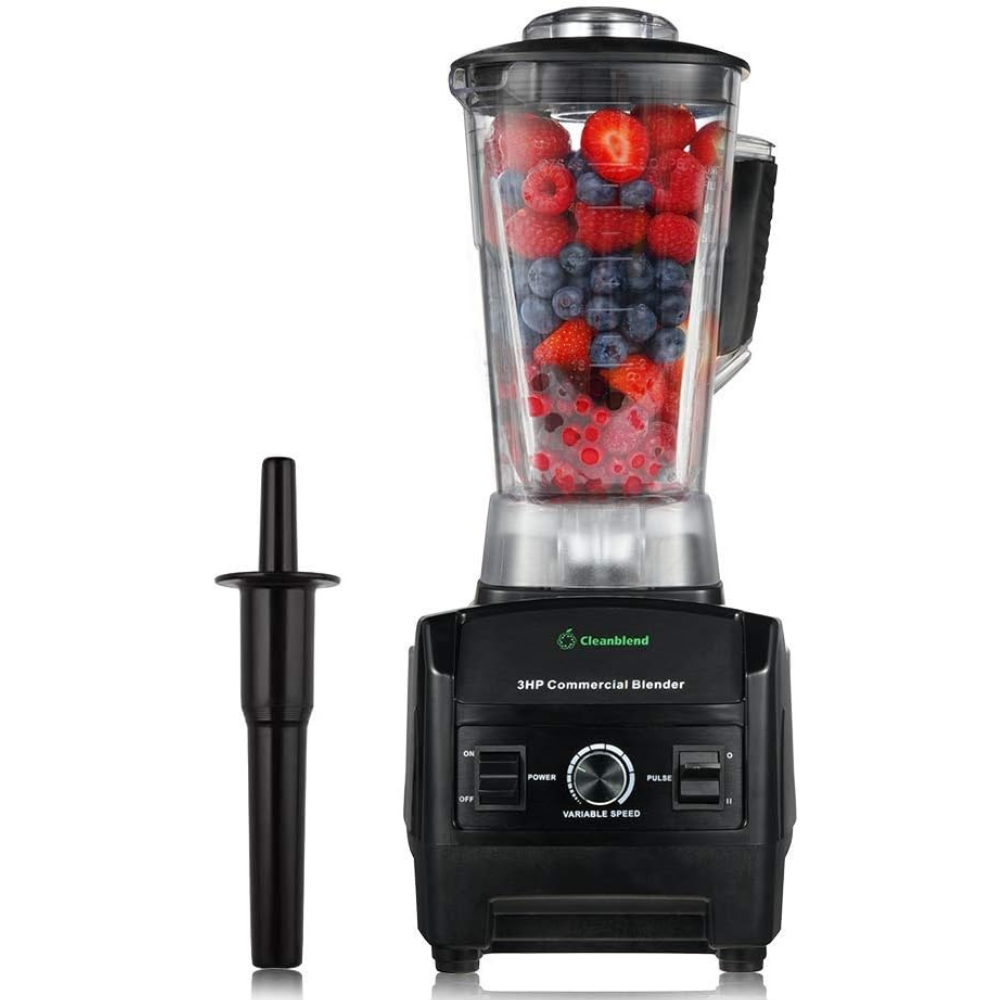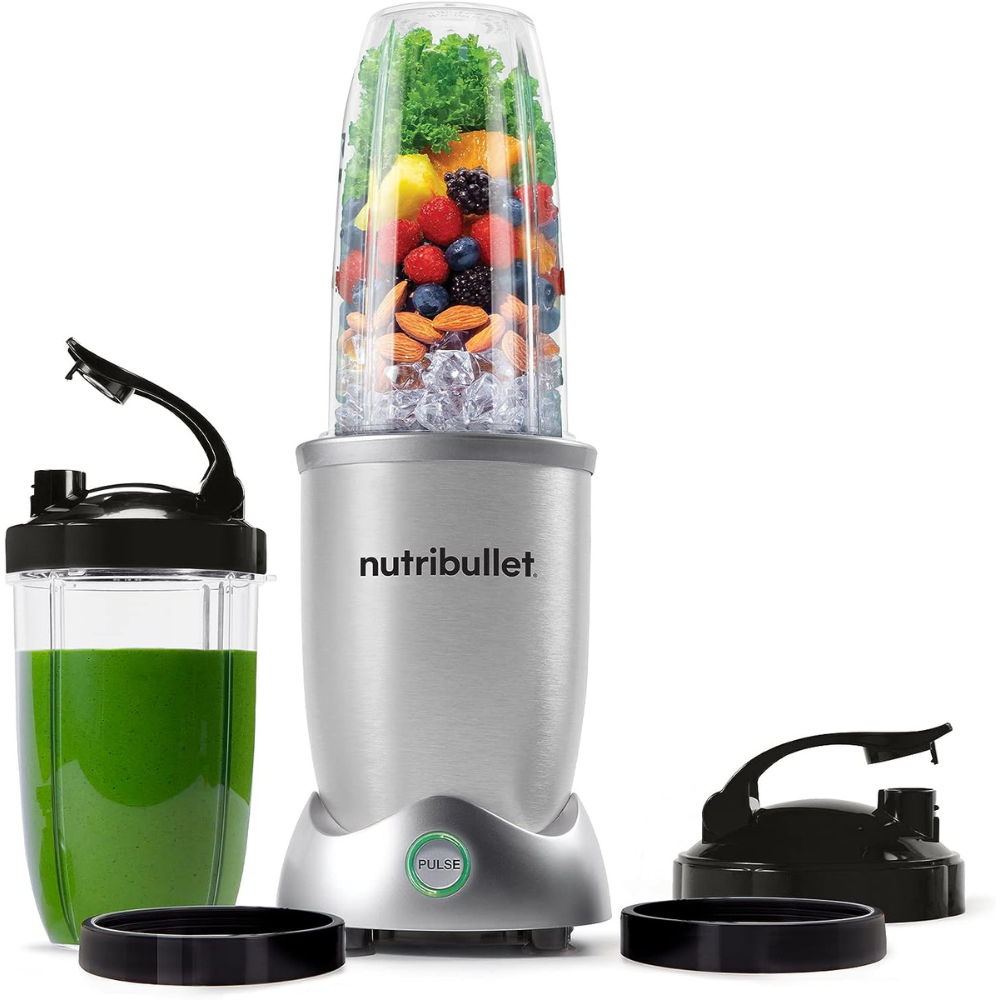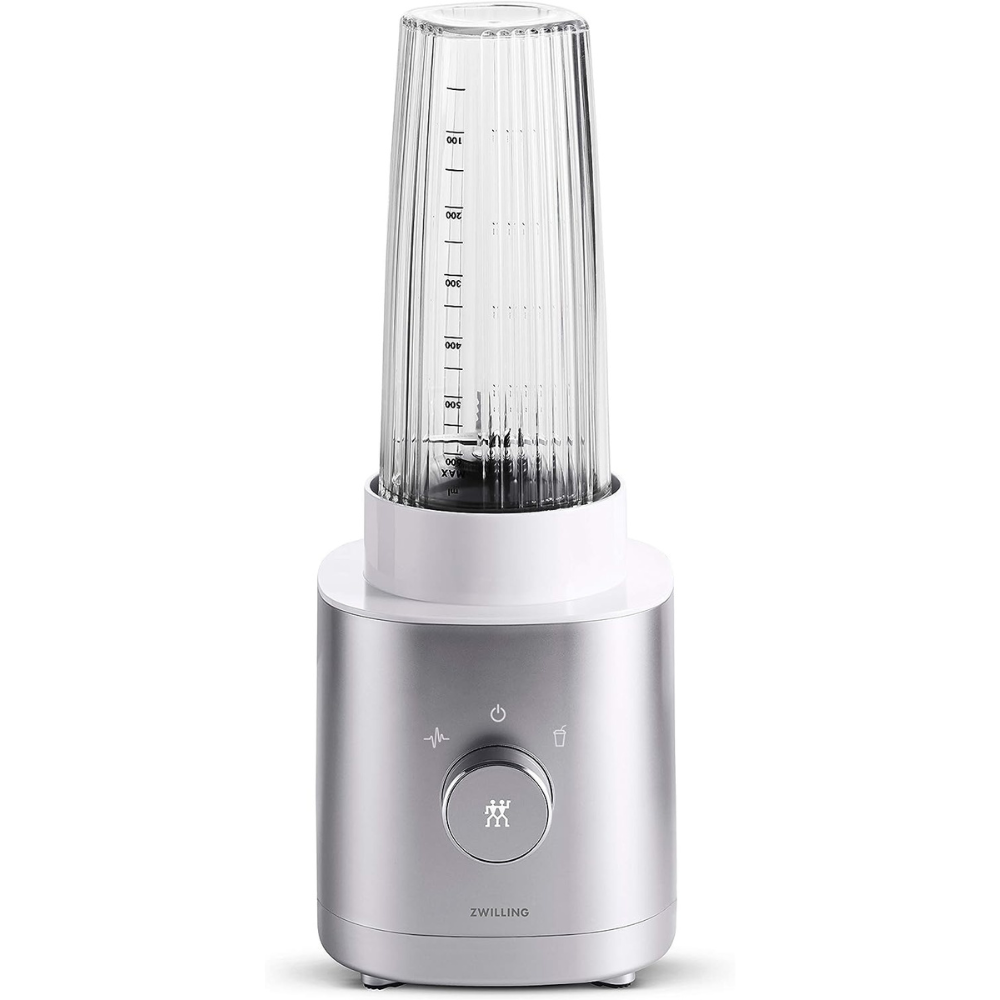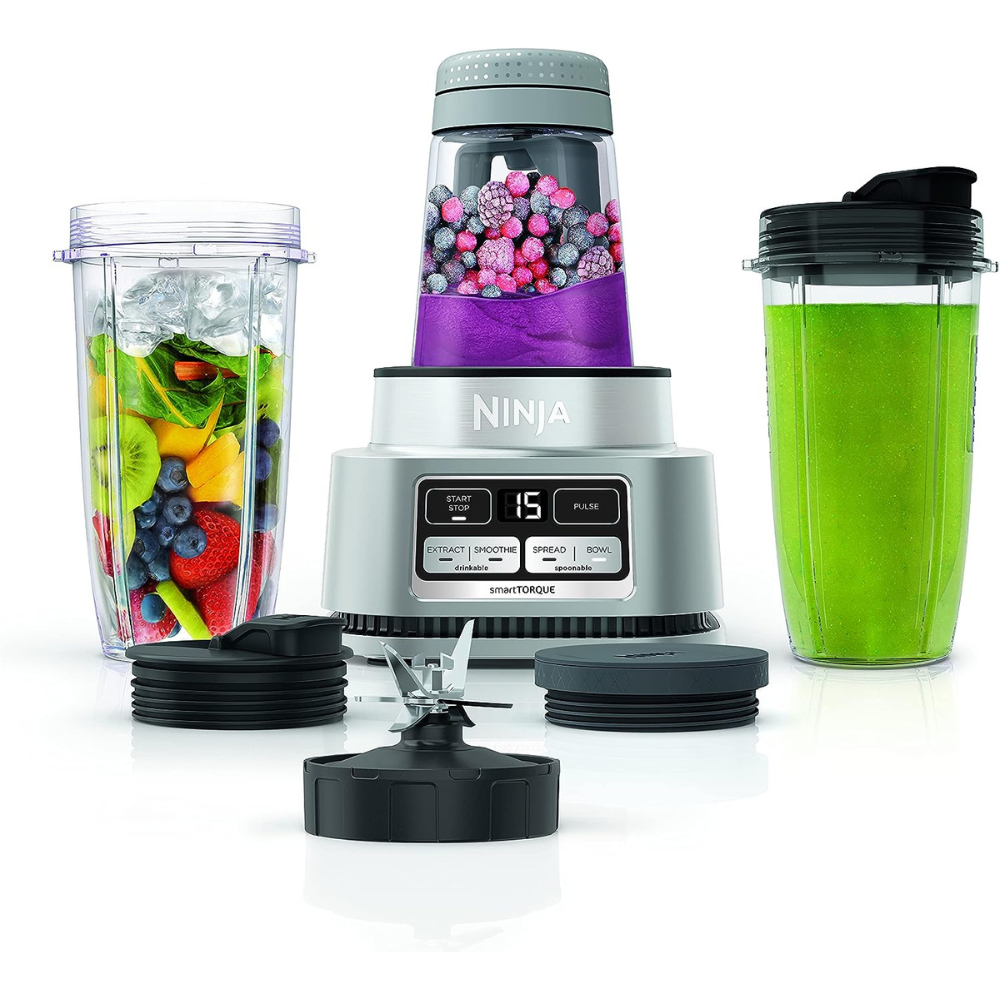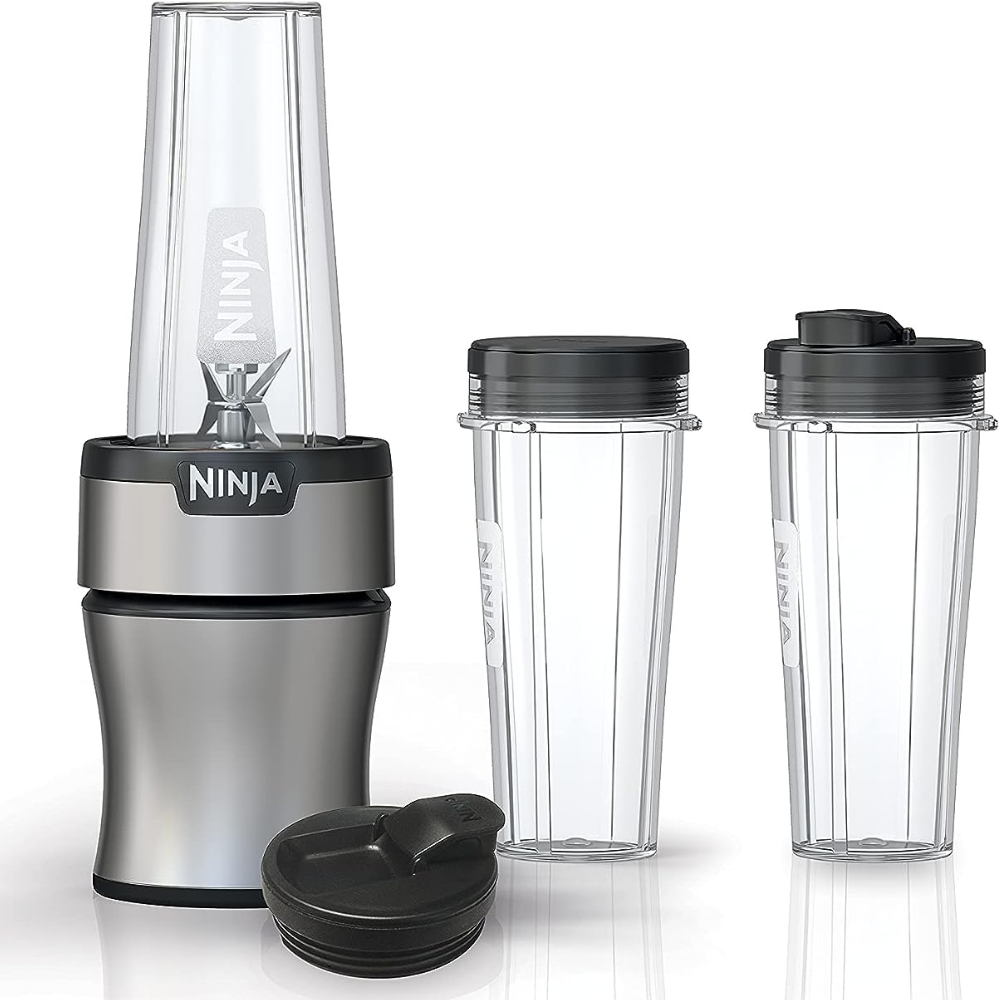Are you a health-conscious individual looking for the ideal blender to help make delicious, nutritious protein supplement shakes? If so, you’ve come to the right place!
We provide an in-depth review of features and customer ratings to bring you the best blender for protein shakes on the market in several categories.
Making protein shakes is a quick way to add a boost of nutrition to your daily diet, and finding the best blender for your needs can make all the difference.
With so many blenders on the market, it can be overwhelming to decide which one to choose.
We’ll compare overall performance as well as features such as power and convenience. From budget-friendly options to high-performance blenders, family-sized or personal blender, comparing horsepower to blade design, each blender has its own unique specifications that influence its performance.
Choosing your perfect blender depends on your needs and preferences:
Countertop blenders are ideal for making smoothies, crushing ice, and blending larger quantities of ingredients.
High-performance blenders often come with additional features, such as variable speeds and preset programs for different blending tasks.
Personal blenders offer small blender, single-serve convenience, don't take up valuable counter space. A small personal blender can even travel with you for on-the-go smoothies!
Some blenders come with added accessories, such as food processors or single-serve cups, that add versatility to their functions.
With so many options, it's important to choose a blender based on what you'll be using it for and what features will simplify your routine.
Our Review Process For the Best Protein Shake Blenders
Finding the best blender for your needs can be overwhelming. With so many blenders on the market, how do you know which one is the right choice?
You could spend countless hours researching and comparing each individual model - reading reviews, understanding features, and talking to others who have made the same decision, etc...
We’ve done the research for you, and reviewed thousands of ratings and consumer reviews, compared features, and ranked them for you - so you can find the perfect protein shake blender for your needs with ease!
Our Picks Of The Best Blenders For Protein Shakes:
Because there are SO many to choose from, we divided our best into three categories:
Full-sized: Blenders that have a capacity greater than 32 ounces.
Personal blender: Small blender with a capacity of 32 ounces or less for single-serve portions.
Portable blender: Personal blender for single-serve portions, but with an overall size of less than 5" x 5" x 15"
FULL-SIZED BLENDERS...
Blendtec Designer Series Blender
What Stands Out:
- BlendTec company known for charity involvement (Ronald McDonald House, Fisher House, and American Heart Association)
- Used commercially at Jamba Juice, Planet Smoothie, and Panera
The Details:
- 90 oz blending jar & 34 oz to go cup made from BPA-Free Polycarbonate
- 1560 Watt motor
- variable 8-speed motor
- 7 preset blending programs, programmable
- dimensions: 11.6 x 13.8 x 11.5 inches
- Designed and manufactured in the USA
The Downside:
- More expensive than many other blenders
- Can be loud
- Hand-wash only
Ninja BL660 Professional Blender
What Stands Out:
- Highest customer ratings
- Well-known Ninja brand blender
The Details:
The Ninja is a well-known name and this blender is a fan favorite!
- Powerful: 1100 Watt motor
- Space-saving: dimensions: 6"D x 8"W x 17"H
- Large capacity: 72-ounce pitcher. Also includes two 16-ounce to-go personal blender cups
- Easy cleaning: blending jar and drinking cup are BPA-free, Dishwasher safe
The Downside:
- Must hold down the button for single-serve operation
- Users say to be careful as grinding blade is VERY sharp
Cleanblend Commercial Blender
What Stands Out:
- Powerful 3 HP motor
- Small-Business
The Details:
The Cleanblend has all the power and commercial durability of big brands at a fraction of the cost
- High Performance blender: 1800 W, 3 HP motor
- Dimensions: 15"D x 18"W x 13"H
- Large size: 64-ounce blending jar, BPA-free
- Comes with a 5 year warranty
The Downside:
- Not dishwasher safe
- Large, heavy blender
Personal size/Single-Serve Blenders...
Nutri Bullet Pro plus N12 1001
What Stands Out:
The Nutri Bullet Pro has a powerful motor for a personal blender
Simple single-button operation
The Details:
- Powerful 1200 W motor base
- Lightweight at 2 lbs, dimensions: 11.81"D x 12.05"W x 12.99"H,
- Includes one 32-ounce and one 24-ounce blender cup with two comfort lip rings, travel lid and two flip-top lids
- Cups are BPA-free. Two comfort lip rings, cups and lids are dishwasher safe
The Downside:
Users say the Nutri Bullet is loud, and to be careful not to overfill to prevent leaking
ZWILLING Enfinigy Personal Blender
What Stands Out:
- Sleek, simple style
- German-engineered, toothed grinding blade for faster blending
The Details:
- 500W motor
- Compact personal blender: only 5.12 lbs, dimensions 5.25"D x 5.75" W x 14.5"H
- BPA-free, dishwasher-safe, 20-ounce Tritan to go cup with lid
- Users say it is quieter than other blenders
The Downside:
Some users report having trouble with ice and chunky, frozen ingredients
Ninja Foodi SS101 Smoothie Maker
What Stands Out:
- Compact size personal blender
- High power
The Details:
- Powerful: 1200 W motor
- Compact size: dimensions 6.69"D x 6.69"W x 10.79"H
- Includes two BPA-free, 24-ounce to-go cups with lids, one 14-ounce smoothie-bowl
- Dishwasher-safe drinking cup, drinking lid and smoothie bowl
The Downside:
Most common complaint among users is the Ninja Foodi Smoothie Maker is very loud
Portable Blenders...
Ninja Nutri Blender Plus
What Stands Out:
Highest power portable-sized blender
The Details:
- 900 W motor base
- 5 lbs, dimensions 4.7"D x 4.7"W x 13.8"H
- Includes, base, blending blade, two BPA-free, 20-ounce to-go cup, 2 drinking lid, and one travel lid
- Dishwasher-safe parts
The Downside:
Users say the blade assembly gasket is deep and can be difficult to remove and keep clean
La Reveuse Smoothie Blender
What Stands Out:
- Blender comes in purple, pink, gray, or silver
- Sleek, portable blender design
The Details:
- 300 W motor base
- Compact size: 2.5 lbs, 5 x 5 x 13 inches,
- Includes base, blending blade, two BPA-free 18-ounce (500ml) travel bottles with drinking lid, metal straw and brush cleaner set
- Bottles fit most car cup-holders
- Replacement cups available on AMAZON
The Downside:
- Hand wash only, not for use with hot liquids
- Recommended for fresh fruits and vegetables only, not recommended to crush ice cubes or frozen fruits
Questions About the BEST Protein Shake Blender - FAQs
Still not sure which blender to buy?
We will share answers to the most popular questions buyers have had about blenders for protein shakes. Hopefully, we will answer any remaining questions you have, and give you the knowledge you need to make the right choice to fit your needs.
q: Is a blender good for protein shakes?
a: Blenders are an incredibly versatile kitchen appliance, and they're great for making your protein shake.
For starters, blenders whip up ingredients like a food processor to create a smooth texture that's virtually impossible with shaker bottles, so can handle a shake in no time at all. On top of that, most blenders are capable of crushing ice cubes to make thicker and creamier textures - especially helpful when you’re trying to make frosty treats like smoothies or milkshakes.
Plus, depending on the type of protein shake blender you invest in (you'll want one with high wattage motor and blades strong enough to handle frozen ingredients) it may be able to grind seeds, nuts or other hard items into a powder or homemade nut butter - perfect if you're looking for creating your own proteins.
Ultimately though, whether or not having a protein shake blender is worth it comes down to personal preference - but if you’re looking for quick convenience in creating delicious shakes packed with nutrition then why not give it a go? You could even experiment by blending different types of fruits along with organic spices for unique flavors!
q: Are expensive blenders worth it?
a: The answer to this question depends on many factors, including your budget and how often you plan to use the blender.
In general, an expensive blender can offer advantages such as powerful motors for crushing ice and tough vegetables and smoothie consistency. It will also come with handy features like a pulse button or even a self-cleaning cycle. However, these blenders tend to be much more expensive than standard models—sometimes costing hundreds of dollars!
So, is an expensive blender worth it? Maybe—but think carefully before investing in one. If you're looking for something that offers superior performance for making frozen cocktails or silky-smooth green smoothies on a regular basis, then a high-end model may be worth the investment. On the other hand, if you simply want something that can blend up frozen strawberries into milkshakes every once in a while without breaking the bank, then cheaper personal blender options may work just fine for your needs.
On the flip side: if crushing ice, making nut butters, or frozen fruit is in your daily routine – plus making hot soups – opt for one of the higher-end units so that it's hopefully still running strong many years later!
q: How do I choose a quality blender?
a: Choosing the right blender can be a tricky process, as there are so many different models and brands on the market.
First consider what you will need your blender to do. Are you wanting it mainly for making smoothies or frozen drinks? If that’s the case, then look for blenders with an easy-to-use button panel and powerful motor – something at least 500 watts would be ideal. Also, decide whether or not having preset programs is important to you – some blenders come with preprogrammed settings for different types of drinks like margaritas, soups, etc. Some even allow you to customize them!
Next up: materials and construction quality. For most purposes stainless steel is usually best; it’s durable enough to withstand daily use while also able to resist rusting or warping over time. Additionally, make sure any removable parts (like cups) are made of tough materials that won’t fracture easily; BPA-free plastics are a great choice here since they don't leach chemicals into food/drink like some cheaper alternatives might do as they age.
Lastly: size matters! Take a look at how much capacity your chosen model offers and think about how often it will get used - if all you need it for is quick smoothies in the morning, a personal blender may suit better than those designed for larger batches. If you need a food processor, are grinding nuts for homemade nut butter & processing sauces, a more substantial option with a food processor attachment, such as the Ninja Mega Kitchen System, should probably be considered. And while we're discussing size...don't forget where you will store it. Some models may fit nicely on countertops while others are too big.
* Be sure to measure both available counter space as well as overhead cabinets before committing either way!
q: Do you put powder or liquid in the blender first?
a: Most experts and fitness enthusiasts agree that when blending a protein shake or smoothie, you should add milk or other liquid first.
Adding the liquid first helps ensure that all of the dry ingredients will be fully blended into your concoction. If you were to add the powder in before the liquid, it would likely settle at the bottom and be more difficult to blend evenly throughout your drink. This is especially true if you’re using a shaker bottle instead of a protein shake blender – if there isn’t enough liquid in there initially to cover up all of those little pieces of powder, they won’t end up getting incorporated into your drink at all!
Adding liquids first also helps make sure that any solids (like frozen fruit) don't get stuck on top - allowing them to stay submerged in order to mix more easily with everything else going on in there as well. Plus, having an adequate amount of liquid early on also helps prevent anything from becoming too thick and hard for whatever device you're using to properly break down and blend together while mixing.
In addition to these technical points, simply starting with liquids creates an easier step-by-step process when making your shakes; which is key for it being quick & easy! After adding the liquids of choice, just toss in whatever else you plan on including - protein powders included - before turning it all into one delicious concoction!
q: How do you make a protein shake not foamy in a blender?
a: Luckily, there are several things you can do to make sure that your protein shake is smooth and not foamy.
The first thing you should try is using cold or even frozen ingredients for maximum smoothness. If possible, buy unflavored protein powder as these tend to mix better than flavored powders with added sugar or other ingredients that may cause foaminess.
You should also try adding the liquid first when making your shake in the blender; this will help ensure the ingredients are properly mixed together for optimal texture. Additionally, adding nut butter or avocado to thicken up thin liquids like almond milk will give it more of a creamy consistency rather than resulting in an airy foaminess.
Finally - be sure you’re not over-blending! This means setting just one speed on low and pulsing it instead of blending on high speed which could produce bubbles in the mixture leading to an undesirable frothy product at the end of it all!
q: How long should you blend a protein shake?
a: When it comes to the protein shake blending process, the time it takes really depends on your personal preference and the type of blender you're using.
Generally speaking, if you want a nice milkshake texture and consistency, then about 30-45 seconds should be enough time. On the other hand, if you like a smoother drink or want your ingredients more blended together, then 45-60 seconds would be ideal.
When using an immersion blender (like those that come with personal blenders such as Nutribullet), blending for about 10-20 seconds should give you a creamy shake. However, if you use something more powerful like Vitamix or Blendtec blenders, then 15-30 second bursts are enough to get good results. This will help prevent over-blending which can denature some of your proteins in the shake thus diminishing their potential effects!
q: What do you blend protein powder with?
a: Protein powder can be blended with many different ingredients, depending on your preference.
Some popular and nutritious options for shake blends are water, almond milk, coconut milk, yogurt, nut butters, or oatmeal.
Water is the most common choice for blending protein powder because it’s simple and easy to use. It’s a great way to get the essential nutrition you need if you don’t have time for a meal but don’t want to fall short of your daily macros.
Almond milk and coconut milk provide additional vitamins and minerals as well as a creamy texture that enhances the flavor of your shake while providing a hearty dose of calcium and anti-inflammatory properties.
Yogurt and nut butters are ways to add thicker texture and increase protein. Read the labels to be aware of sugar content.
Fresh or frozen fruit and leafy greens make great shake blends because they provide fruit sugars which boost satiety levels as well as natural fiber from fresh fruit and vegetables that slow down digestion for lasting energy. Fresh fruits contain more liquid so they're filling without being too heavy in calories.
Oatmeal is high in complex carbohydrates which help fuel our bodies longer than simple carbs do; coupled with its added fiber content this makes oatmeal an excellent source of long-term energy that also helps keep us full between meals. Choose whole or steel-cut oats for optimum fiber.
Use your imagination and trial and error to find your favorite combination!
q: Do protein shakes taste better with milk or water?
a: Protein shakes can taste great with milk or water.
Generally speaking, shakes tend to have better flavor and texture when made with dairy milk compared to nondairy or alternative milk like soy milk or almond milk.
When it comes to making protein supplement shakes with liquid, water is often the best choice as it has a neutral flavor that won't overpower the other ingredients. Milk brings richer flavors and creamy textures due to its fat content but some people find that it makes their shake too sweet. You can always mix and match liquids for your perfect consistency and flavor.
q: What can I substitute for milk in a protein shake?
a: There are plenty of delicious and nutritious alternatives to choose from.
First and foremost, plant-based milk alternatives such as oat, almond, coconut or soy are excellent choices. These plant-based milk contain a variety of vitamins and minerals that not only provide muscle-building nutrition but also promote gut health. Additionally, unsweetened nut milk such as cashew or macadamia can make great additions to your smoothie too.
What’s more, you need dairy to get the benefits of whey protein either! Pea protein powders offer a high level of essential amino acids without the extra fat or lumps found in some traditional protein powders. The non-dairy substitutes often taste better than whey powder!
Fruit juice is another option, just be sure to choose juices without added sugar.
q: Is almond milk good for protein shakes?
a: Yes, almond milk is a fantastic choice for your protein shake!
Almond milk is high in protein, low in calories and very low in sugar.
When used as an alternative to traditional cow’s milk or other dairy products, almond milk can add a delicious nutty flavor to your protein shake while reducing the total amount of fat and calories drastically.
In terms of nutrients, almond milk provides significant amounts of vitamin E (an antioxidant that helps protect cells from damage), calcium (which helps maintain strong bones), magnesium (essential for healthy muscle function) as well as iron (decreases fatigue).
Overall, almond milk can be a great addition to any diet – whether you’re strictly plant-based or simply looking for healthier alternatives – making it perfect for your protein shake!
*Want to make your own almond milk? See our review of the BEST Nut Milk Makers
Which is the BEST Blender for a Protein shake?
A good protein shake blender can be a game-changer. With so many different blender brands and models available, it can be difficult to choose the right one for your needs. We have done the research and given you our top blender choices. You can be assured you are armed with all the information you need to make a smart choice for yourself and get a great blender to fit your needs.
Whichever blender is your favorite, feel free to take a closer look by tapping the link provided below each blender.
Thanks for reading!
Happy shopping and HAPPY BLENDING!
